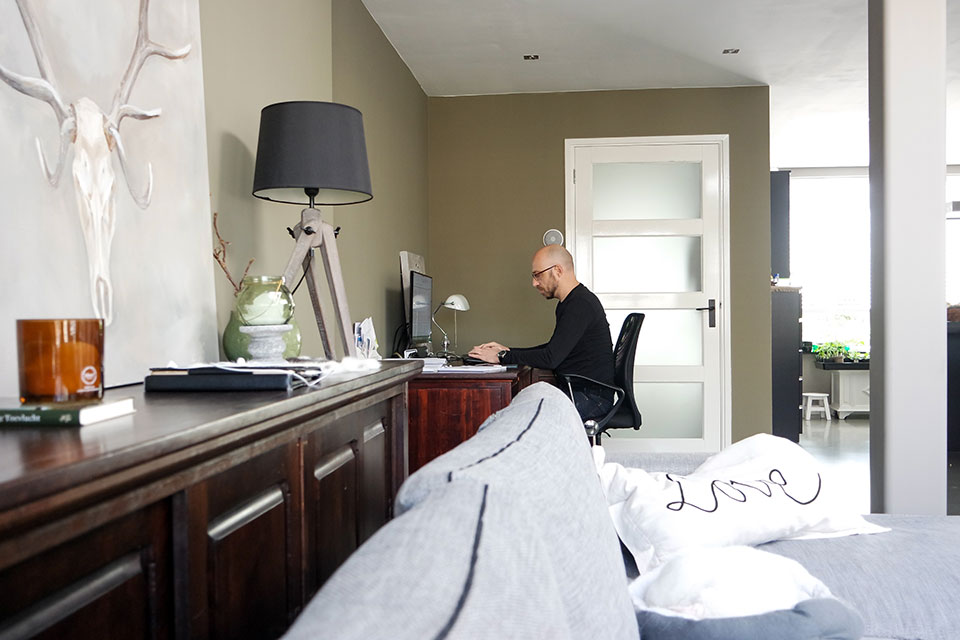How to Defeat Work-From-Home Burnout and Zoom Fatigue

As we transition from the pandemic into post-pandemic life, many companies have adapted hybrid models. That means workers coming in part-time only, while others remain fully remote. So the same issues of work-from-home burnout and Zoom fatigue that posed problems during the pandemic will remain salient for the foreseeable future.
The vast majority of organizations treat these issues as day-to-day challenges. They fail to recognize their systematic nature and addressing them strategically.
These problems come from organizations transposing their “office culture” norms of interaction to working from home. That just doesn’t work well. Virtual communication, collaboration, and relationships function very differently than in-person ones.
To survive and thrive in the post-COVID world, organizations need to make a strategic shift. They need to focus on best practices for the percentage of time that their employees work from home.
A Strategic Approach to Defeating Work-From-Home Burnout and Zoom Fatigue
Take these steps to establish work-from-home best practices:
- Gather information from your employees about their virtual work challenges. Run surveys and do focus groups and one-on-one interviews. Use these to get quantitative and qualitative data on the virtual work issues in your organization.
- Develop metrics and determine a baseline. Structure surveys so that you can use the quantitative results to establish clear metrics on work-from-home challenges. Use this data to develop a baseline prior to doing the interventions below.
- Educate your employees about the deprivations of needs. We don’t recognize a large component of what we perceive as work-from-home burnout. We don’t recognize the deprivation of our basic human needs of connection to each other. A critical early intervention involves educating employees about this topic.
- Cultivate a sense of meaning in your employees. Help your employees intentionally develop a sense of meaning in the virtual workplace. That includes using an evaluative tool to establish a baseline of purpose. Use self-reflective activities on identity as tied to one’s work. Deploy other practices such as connecting work to something bigger than yourself.
- Cultivate mutual connections using native virtual formats. We want to connect with each other. But our emotions just don’t process little squares on a screen in a video conference as truly connecting, compared to in-person meetings. The mismatch between expectations and reality leads to drain and dissatisfaction from videoconferences. That’s what we call “Zoom fatigue.” Focus on cultivating human connection and a sense of trust. Replace bonding activities from office culture with innovative virtual bonding activities.
- Provide professional development in effective virtual communication. There are numerous tips and tricks for effective virtual communication. But the vast majority of organizations fail to provide professional development in this area.
- Provide professional development in effective virtual collaboration and relationship-building. The same lack of professional development applies to virtual collaboration and relationship-building.
- Initiate formal virtual mentorship programs. Get your senior staff to mentor junior ones. This will be good not just for the guidance that senior mentors can give. It will also help address the lack of social connection in a virtual workplace, for both senior and junior employees. Moreover, it will help the senior employees learn how to handle technology better. Younger employees tend to be more savvy with digital tools.
- Establish digital coworking. The members of each of your work teams should spend an hour or more per day coworking digitally with their teammates. Get on a videoconference call (with video optional). Turn your speakers on but microphones off unless you want to ask a question or make a comment or simply chat. Next, simply work on your own tasks. Digital coworking replicates the positive aspects of being in a shared cubicle spaces with your team members, but doing your own work. That includes mutual bonding through chatting and collaboration. It also includes asking and answering quick clarifying questions. Finally, it includes providing guidance and informal mentorship.
- Funding for remote work. Provide a budget for your employees to address any technology and connection issues related to virtual work. Also help set up a comfortable home office.
- Reduce unnecessary meetings. Don’t schedule meetings unless you need to make a decision or get clarification on something that requires synchronous discussion. Use text or recorded video or audio form to send reports and updates for others to review and respond later.
- Weekly check-in and progress report evaluation. At the same time, leaders need to check individually on their team members’ progress and wellbeing. Do so in a 15-30 minute videoconference weekly.
- Support work/life boundaries. Too many leaders expect employees to work after hours, and refuse requests for flexibility. Some employees, scared for their jobs, voluntarily take on too much work. Leaders need to reinforce boundaries to reduce burnout and encourage flexible working schedules whenever possible.
- Take things step by step. Start with education about basic needs. Next, use the data from your internal surveys to pursue what seems to make the most sense.
To address work-from-home burnout, reframe your company culture and policies from remote work as an emergency mindset to remote work being the new normal. Consistently support your employees in this strategic shift. That will enable your organization to survive and thrive in the post-pandemic world.
Written by Dr. Gleb Tsipursky.
Add CEOWORLD magazine to your Google News feed.
Follow CEOWORLD magazine headlines on: Google News, LinkedIn, Twitter, and Facebook.
This report/news/ranking/statistics has been prepared only for general guidance on matters of interest and does not constitute professional advice. You should not act upon the information contained in this publication without obtaining specific professional advice. No representation or warranty (express or implied) is given as to the accuracy or completeness of the information contained in this publication, and, to the extent permitted by law, CEOWORLD magazine does not accept or assume any liability, responsibility or duty of care for any consequences of you or anyone else acting, or refraining to act, in reliance on the information contained in this publication or for any decision based on it.
Copyright 2024 The CEOWORLD magazine. All rights reserved. This material (and any extract from it) must not be copied, redistributed or placed on any website, without CEOWORLD magazine' prior written consent. For media queries, please contact: info@ceoworld.biz
SUBSCRIBE NEWSLETTER








